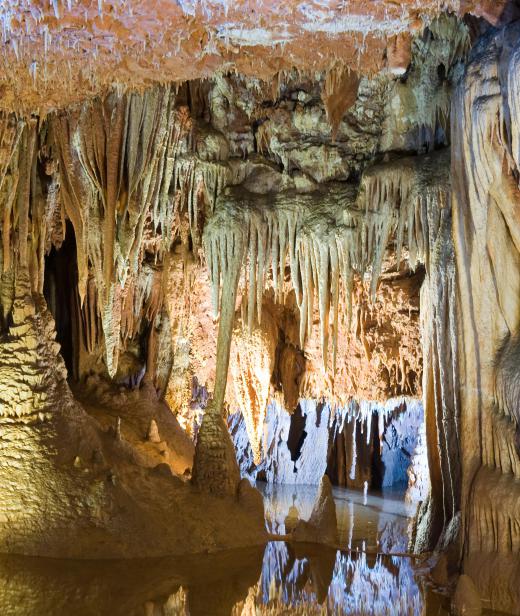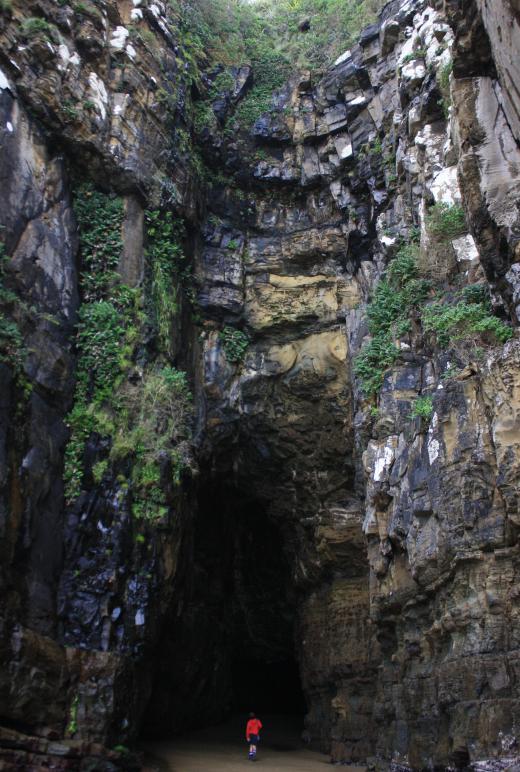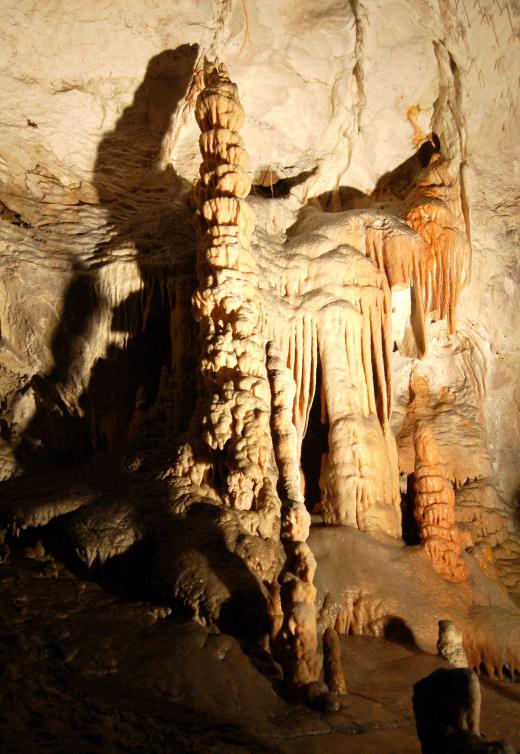What are Some Common Cave Features?
 Michael Anissimov
Michael Anissimov
The world’s caves contain numerous beautiful and mysterious formations for anyone brave enough to venture into them. There are the obvious ones – stalactites and stalagmites – but also soda straws, flowstone, columns, curtains, helictites, ringstone dams, cave corals, and many others. These formations are called speleothems, from the Greek spelaion for cave and thema for deposit. Cave formations grow slowly, about a centimeter per year or less, requiring centuries or millennia to create the amazing forms we can see today.
The most familiar cave formations are the stalactite and the stalagmite. Stalactites form from soda straws, hollow, elongated tubes of calcite (calcium carbonate) formed as water drips down from a hole or crack in the ceiling. Each drop of water deposits a tiny bit of calcite, and over time it gets built up. The material is called dripstone. When a soda straw gets large enough, it becomes a stalactite. A stalagmite is a complementary cave feature that forms on the ground underneath a stalactite. It is formed by the calcite-laden drops dripping from the ceiling. An easy way to remember the difference between the two is that stalactites hold tight to the ceiling, whereas stalagmites might reach the ceiling. When a stalactite and stalagmite meet, they become a column. Columns can become quite impressive, with the largest 10 m or greater in height.

Many cave formations are all based on the same principle of slowly dripping water depositing calcite, or sometimes gypsum, which is calcium sulfate, into complex shapes over long time periods. You can observe this effect yourself by mixing water with sand, cupping it in your hands, and letting the water drip down. Quickly the sand will build up, creating a small tower.

Another variation of the classic stalactite is the helictite, a stalactite that forms so slowly that subtle chemical or physical changes caused an alteration of the crystal structure of the deposited calcite, slowly twisting it around. Helictites appear as spiraling cylinders or needles.
When water drips through an elongated crack or flows down an incline on the ceiling as it falls, it can create curtains and draperies, delicately folding cave formations which look like their namesakes.

When calcite-rich water flows down a wall, it is called flowstone. Sometimes this water flows down a vertical drop in a cave, and is called flowstone falls. Sometimes instead of flowing, water under hydrostatic pressure is slowly extruded from a crack in the wall or floor, creating a structure called a shield.
There are many other beautiful cave formations: cave pearls, clouds, rafts and raft cones, rimstone, shelfstone, bottlebrush, canopies, and more. To look at images of these features, find them using your favorite image search.
AS FEATURED ON:
AS FEATURED ON:













Discuss this Article
Post your comments